Malaria is a life-threatening disease caused by parasites of the genus Plasmodium, transmitted by the bite of infected mosquitoes. The most deadly form of malaria is caused by Plasmodium falciparum, which is responsible for about 95% of all malaria cases in sub-Saharan Africa. The standard treatment for this type of malaria is a combination of two drugs: artemisinin, which rapidly kills the parasites in the blood, and a partner drug, which clears the remaining parasites and prevents resistance. This treatment, known as artemisinin-based combination therapy (ACT), has been endorsed by the World Health Organization (WHO) since 2001 and has saved millions of lives.
However, the effectiveness of ACT is threatened by the emergence and spread of P. falciparum strains that are resistant to both artemisinin and its partner drugs. These strains have been detected in Southeast Asia since 2008 and have recently been reported in Africa. The presence of artemisinin-resistant malaria in Africa is a major concern, as it could compromise the progress made in malaria control and elimination, and increase the risk of severe complications and death.
A recent study by Casanova et al. published in the Travel Medicine and Infectious Disease journal provides a striking example of the emergence of a P. falciparum strain carrying mutations in artemisinin resistance-associated genes, with potential consequences of artemisinin resistance in Africa. The authors describe the case of a 45-year-old male who travelled to Mozambique for two weeks and developed clear signs of cerebral malaria after returning to Portugal, that lead to admitting the patient in the intensive care unit at the Hospital Senhora da Oliveira, Guimarães, with invasive ventilation. The patient was initially treated with quinine and doxycycline, and was further switched to intravenous artesunate, the most potent form of artemisinin.
To investigate the molecular basis of the drug resistance, the authors performed ex vivo antimalarial drug response and genomic analyses of the P. falciparum isolate obtained from the patient. They found that the isolate was less sensitive to dihydroartemisinin (the active metabolite of artesunate), lumefantrine, mefloquine and piperaquine, (three of the most commonly used partner drugs in ACT), revealed by the elevated ex vivo half-maximal inhibitory concentration (IC50) values.
They also identified a mutation (I416V) in the P. falciparum Kelch13 (PF3D7_1343700) gene, a key artemisinin resistance linked gene. In addition, they detected several mutations in other genes that are associated with resistance to partner drugs or are candidates for modulating the response to artemisinin.
The authors concluded that this case represents a potential threat of the rising of artemisinin resistance in Mozambique, a country that alone accounts for 4% of all malaria cases worldwide. Thus, this case strengthens the need to monitor closely the performance of ACT drugs and molecular surveillance of the P. falciparum genome as markers of resistance to artemisinins in this region.
They also highlighted the importance of continuous surveillance of drug resistance in travellers returning from these areas.
According to the European Centre for Disease Prevention and Control, the European Union (EU) experienced a rise in the notification rate of imported malaria cases from 0.3 to 0.6 per 100,000 population from 2020 to 2021, resulting in 4,856 reported cases in 2021. Portugal followed the EU trend with an increased rate from 0.6 to 0.8, resulting in 78 malaria cases in 2021.
This escalation is compounded by various challenges, including conflicts, humanitarian crises, resource limitations, climate change, and persistent biological obstacles like drug resistance. These factors continue to impede progress in malaria control and eradication, forecasting an increase in the incidence of imported cases.
The author thus, recommend the use of molecular tools to monitor the spread of resistance-associated mutations, and the implementation of effective malaria prevention and control strategies to reduce the transmission and selection of resistant strains.
This case study illustrates the challenge of combating malaria in the face of evolving drug resistance, and the need for novel and improved antimalarial drugs. It also underscores the role of travel medicine in detecting and reporting emerging threats to global health, and the responsibility of travellers to seek pre-travel advice, adhere to chemoprophylaxis and seek prompt diagnosis and treatment if they develop malaria symptoms.”
Authors are further strengthening collaboration with Portuguese hospitals, expanding efforts to address gaps in malaria drug resistance surveillance, aspiring to reinforce Portugal’s role within international surveillance networks, fostering a collaborative approach that transcends borders.








